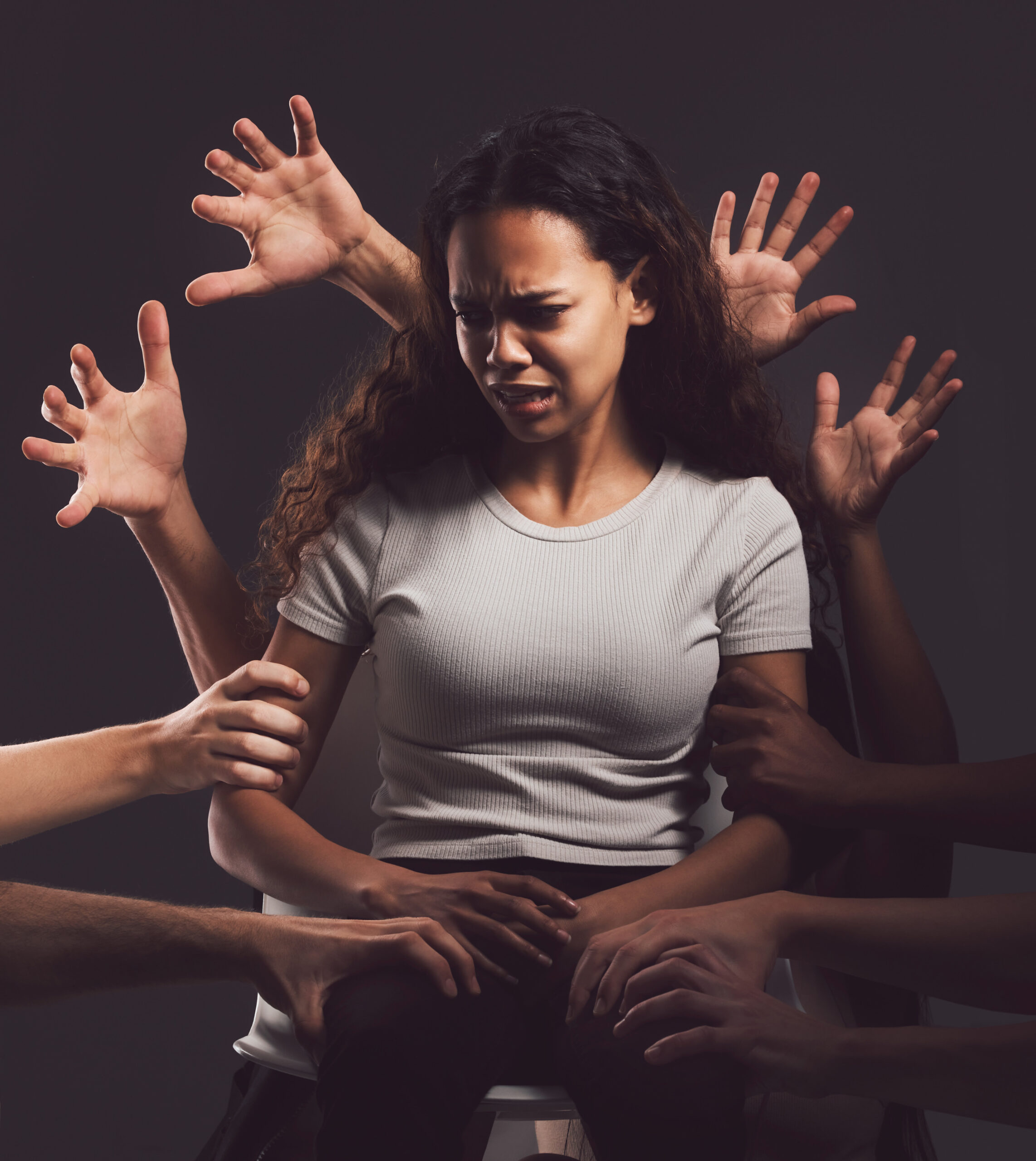Your symptoms of post-traumatic stress disorder (PTSD) come and go. You might feel fine until you hear a car backfire loudly, at which point you suddenly become scared. Images of your time in combat flood into your mind. PTSD triggers bring back strong memories, making it feel like you’re experiencing the trauma all over again. These triggers can include sights, sounds, smells, or thoughts that remind you of the traumatic event. In some cases, PTSD triggers are obvious, such as seeing a news report of an assault. In other cases, they may be less apparent. For instance, if you were attacked on a sunny day, seeing a bright blue sky might upset you.
In a dangerous situation, your body gets ready to fight, flee, or freeze. Your heart beats faster, and your senses are on high alert. During this time, your brain may pause some normal functions, including short-term memory. In PTSD, the brain doesn’t process trauma correctly; it fails to file the memory of the event as past. Memories are often tied to specific details like sights or smells. These triggers can activate your body’s alarm system. When triggered, your brain shifts into danger mode, leading to fear and a racing heart. The sights, sounds, and sensations of the trauma may return vividly, known as a flashback.
A trigger is anything that brings back memories of a trauma, especially right before or during an episode. Triggers typically involve your senses—something you see, feel, smell, touch, or taste. While triggers themselves are usually harmless, they prompt your body to react as if you’re in immediate danger.
The Following Are Some of the Most Common Triggers for PTSD:
Certain people or physical traits can trigger PTSD reactions. For example, if a person with a beard mugged you, seeing another bearded man may evoke memories. The emotions felt during a traumatic event—such as fear, helplessness, or stress—can also cause symptoms. Objects associated with the trauma can trigger PTSD symptoms. For instance, someone who survived a fire might react to the smell of smoke from a barbecue. Returning to the scene of the trauma or certain types of places, like dark hallways, can also act as triggers. Media depictions of similar traumas in TV shows, movies, or news reports may trigger symptoms.
Survivors of assault may experience flashbacks triggered by physical touches on specific body parts. Veterans may be reminded of trauma by specific sounds, songs, or voices; for example, hearing a car backfire could evoke memories of gunfire. Certain tastes, such as the taste of alcohol, can also evoke memories of traumatic events. For instance, being stuck in an elevator might trigger feelings of being trapped after a car accident. Dates marked by traumatic events, like 9/11, can be particularly difficult, as they often bring back vivid memories. Reading or hearing certain words can also trigger PTSD symptoms, depending on their association with the traumatic experience.
What Are Some Ways to Recognize Triggers?
PTSD symptoms may seem to come out of nowhere. However, they’re usually caused by a hidden trigger. Some triggers are obvious, while others are subtle. An experience that makes you feel in danger is a PTSD trigger. A therapist can help you identify yours and teach you ways to cope. When soldiers return from war, they often suffer from post-traumatic stress disorder (PTSD). When soldiers are triggered, they may experience flashbacks, memories, or panic attacks; this occurs when something reminds them of a traumatic experience they have experienced. Many survivors of sexualized violence experience PTSD symptoms and triggers in the same way as veterans of war due to the similar imprints left in the brain.
When a person experiences a trigger, they are transported back to the event of their original trauma, causing them to experience overwhelming emotions, physical symptoms, or thoughts. This often results in a memory tape or flashback. The individual will react to this trigger emotionally in a way similar to how they did during the trauma. When survivors of sexualized violence (or any kind of trauma) are triggered, their brains cannot distinguish between what happened then and what is happening now. A trauma survivor may not realize they have experienced a trigger and may be confused about their feelings and behavior.
Signs of Triggers:
- Sudden or unexplained crying
- Fear, anxiety, or paranoia
- Attacks of anxiety
- A sudden onset of symptoms such as nausea or fatigue
- Irritability, intrusive thoughts, being easily startled, hyper-vigilance, and other signs that your mind is alert
- Using unhealthy coping mechanisms during or after an attack
Activating triggers are a personal matter; different things trigger different people. They are often activated by one or more of the five senses: sight, sound, touch, smell, and taste. When we experience sensory stimuli associated with a traumatic event, they can trigger an emotional reaction that bypasses reasoning. Triggers can take many forms, and they are often related to a person’s senses. For example, the smell of a particular flower or seeing a certain-colored car might trigger an emotional reaction in someone whose brain associates that stimulus with a traumatic experience. Triggers can manifest in various ways, including:
- Observing: Seeing someone who resembles the abuser (e.g., similar clothing, hair color, distinctive walk).
- Witnessing: Observing someone being abused (e.g., a raised eyebrow or a verbal comment).
- Objects: Encountering objects used during the abuse.
- Associative Objects: Objects linked to or common in the environment where the abuse occurred (e.g., alcohol, specific furniture, or seasons).
Triggers can occur in various places or situations where abuse took place, including:
- Locations: The exact place where the abuse occurred (such as at home, during holidays, at family events, or social gatherings). This can extend to specific locations like a lake where the abuse happened, or even entire cities or countries. For example, experiencing childhood sexual abuse could trigger a reaction when going to court, seeing media coverage, or revisiting the location of the trauma.
- Sounds: Any sounds associated with pain or fear, such as cries, whispers, or screams. This includes sounds present before, during, or after the abuse, such as sirens, foghorns, music, crickets chirping, or car doors closing. Specific noises made by the abuser, like whistling, footsteps, the pop of a can opening, tone of voice, accents, or spoken language, can also be triggers. Verbal abuse, including cursing, labels, put-downs, or specific words, may also trigger responses. Additionally, whispered words or pet names used by the abuser can act as triggers.
- Smells: Any substance that resembles the smell of the abuser, such as tobacco, alcohol, drugs, aftershave, or perfume. Smells similar to the place or situation of the abuse (e.g., cooking food, wood, alcohol) can also be triggering.
- Touches: Physical sensations that remind you of abuse, such as certain types of touch, someone standing too close, or petting an animal. The way someone approaches you might also be a trigger.
- Tastes: Experiences of taste that occurred during, before, or after the abuse, such as certain foods, alcohol, or tobacco, can be triggering.
Management of Triggers
Over time, triggers may lose their significance. Fortunately, survivors can learn to identify and manage trigger symptoms, potentially reducing their impact. Focusing on the present moment can be particularly beneficial.
The 5 Senses Exercise can help with this:
- Sight: Name five things you can see in the room.
- Touch: Identify four things you can feel right now (e.g., the softness of your t-shirt, your feet on the floor).
- Hearing: Describe three things you can hear right now (e.g., the TV, birds outside).
- Smell: Identify two things you can smell right now.
- Self-Affirmation: State one good thing about yourself.
For more information, visit:




